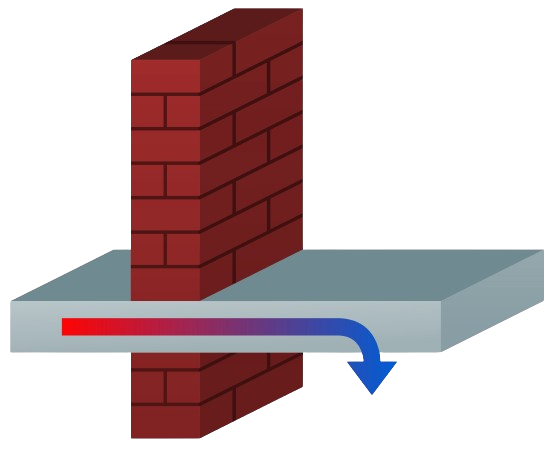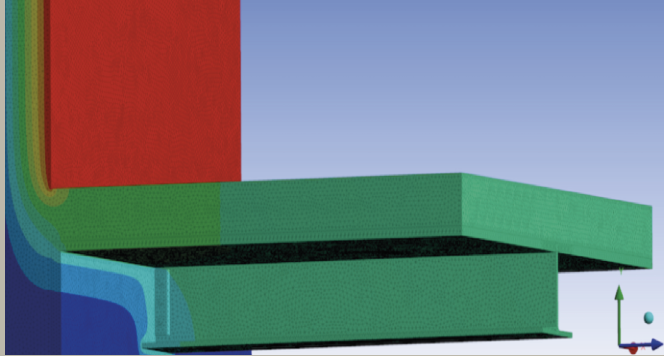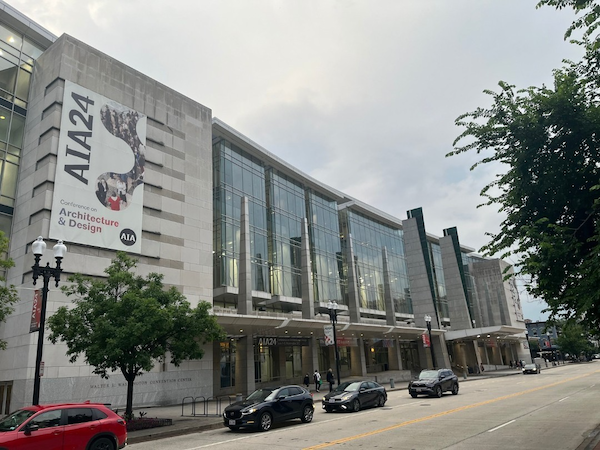
Table of Contents
- Meeting Energy Efficiency Goals
- OEESC and ASHRAE 90.1-2022 Adoption
- ASHRAE 90.1-2022 Thermal Bridges
- ClimaSpec Structural Thermal Breaks
- Demonstrate Minimizing Thermal Bridges
Meeting Energy Efficiency Goals
The new Oregon Energy Efficiency Specialty Code (OEESC) is anticipated to be effective July 1, 2024 with a six-month phase in period where either the 2024 or 2021 standard can be used. The purpose of the revision is to have a “predictable and consistent OEESC adoption process to meet the energy efficiency goals of the state, based on a thoroughly vetted, federal recognized national model energy standard.” – OEESC
OEESC and ASHRAE 90.1-2022 Adoption
The OEESC 2024 edition is based on the model code ASHRAE 90.1-2022 Energy Standard for Sites and Buildings Except Low-Rise Residential Buildings. However, there are also specific modifications to ANSI/ASHRAE/IES Standard 90.1 – 2022, for instance on-site renewable energy calculations, energy credits, ventilation systems for dwelling units, and HVAC systems for data centers.
ASHRAE 90.1-2022 Thermal Bridges
One notable new inclusion in ASHRAE 90.1-2022 is the recognition of thermal bridges, in particular, linear thermal bridges and some point thermal bridges. Thermal bridging, often referred to as a cold bridge, occurs when a conductive material allows heat to flow through a building envelope more easily than the surrounding insulation. This can lead to energy inefficiencies, increased heating and cooling costs, and potential comfort issues for building occupants. Traditional building designs often underestimate the impact of thermal bridging, resulting in structures that are less energy-efficient than calculated.
ClimaSpec Structural Thermal Breaks
Both prescriptive & performance requirements of ASHRAE 90.1-2022 require thermal bridging mitigating strategies. Therefore, it is important to know innovative construction techniques to reduce thermal bridging.
ClimaSpec Structural Thermal Breaks are an engineered solution specifically designed to minimize thermal bridges. This is achieved by interrupting the transfer of heat through structural elements that penetrate the building envelope. ClimaSpec Structural Thermal Breaks can be designed and installed into several structural connection locations within the insulation line. By mitigating thermal bridging with ClimaSpec Structural Thermal breaks, code compliance can be achieved or exceeded, regardless of the building base approach.
Demonstrate Minimizing Thermal Bridges
It is important to be able to demonstrate the thermal bridge reduction when using ClimaSpec Structural Thermal Breaks. That is why ClimaSpec can perform 2D and 3D thermal modeling to demonstrate the increased energy efficiency of structural thermal break connections. Additionally, dew point behavior can be predicted to ensure condensation risks are reduced as well as identifying surface temperature predictions.

If you would like to discuss how ClimaSpec Structural Thermal Breaks and thermal modeling services can improve and ensure your projects in Oregon are OEESC code-compliant, contact ClimaSpec to speak with a structural thermal break expert.


